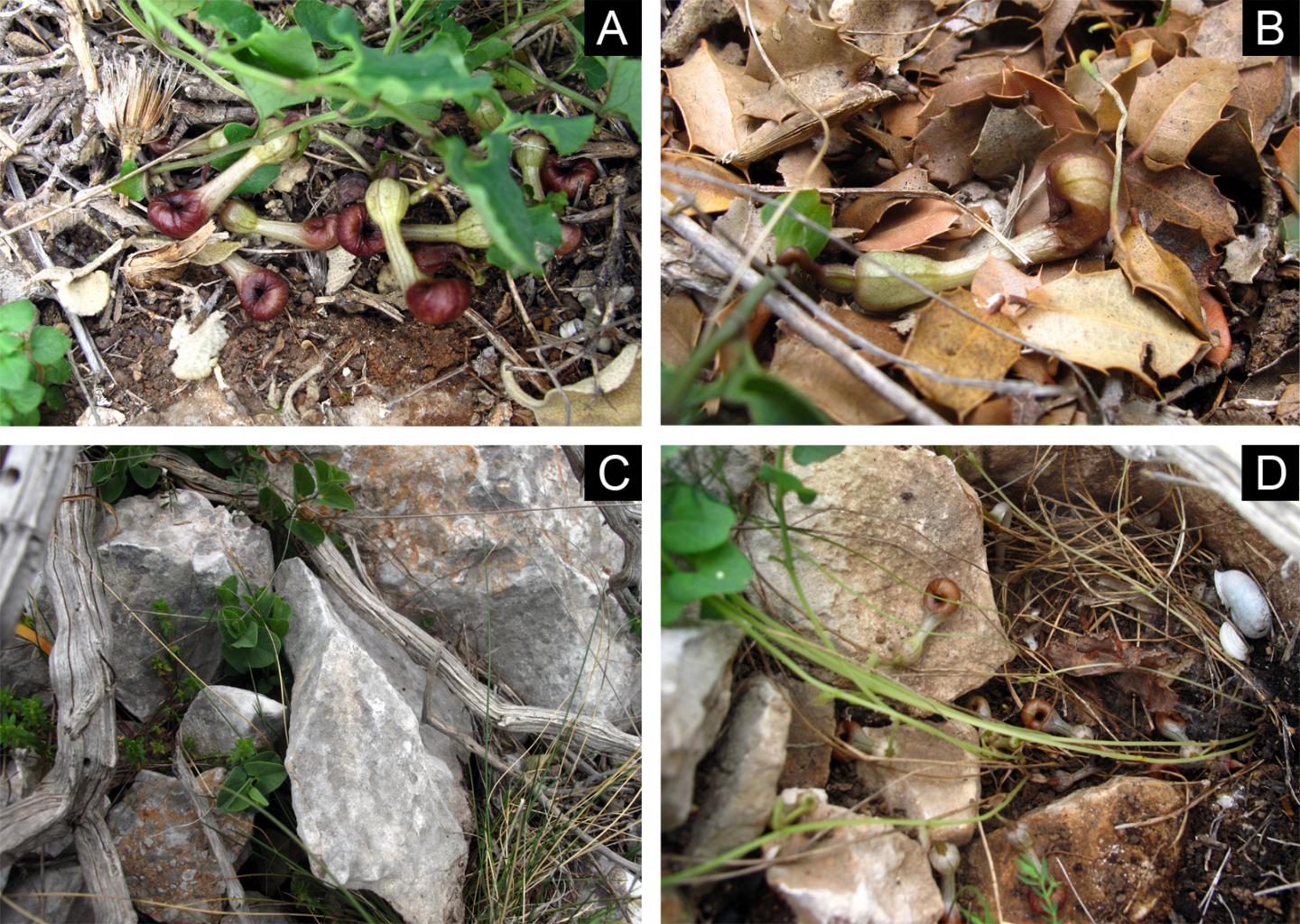Flowers use the smell of death to lure and imprison coffin flies
Scientists recently discovered a flower that lures in and imprisons coffin flies with the smell of death.

Scientists recently discovered a flower that lures in and imprisons coffin flies with the smell of death. The plant uses this stinky aroma to trick the insects into pollinating its flowers.
This is the first time that a flower has been found to mimic the scent of dead insects as opposed to dead vertebrates, according to the new study.
Between 4% and 6% of flowering plants use a "deceptive pollination strategy" in which they lure in pollinators such as insects with a scent, color or touch that suggests a reward, such as nectar, pollen or mating and breeding sites that don't exist, according to a statement. Because pollinators are bad at telling apart real and fake rewards, they will pollinate these plants, or move pollen from the male part of a plant to a female part to allow fertilization.
Related: Hold your nose: 7 foul flowers
Orchids are known to employ this trickery, but other plants have also evolved to play the game, including members of the genus Aristolochia. This plant genus is divided into more than 550 different species that are found around the world, but they are especially abundant in tropical and subtropical regions. These plants are known to imprison pollinators — temporarily — to get pollinated.
"Many Aristolochia species are known to attract flies with floral scents, for example mimicking the smell of carrion or feces of mammals, decaying plants, or fungi," lead author Thomas Rupp, a doctoral student at the Paris Lodron University of Salzburg, in Austria said in a statement. But Rupp and his team focused on a specific species known as Aristolochia microstoma that's endemic to Greece.
"Unlike other Aristolochia with their showy flowers, A. microstoma has inconspicuous brownish flowers that lie horizontally, partly buried or close to the ground among leaf litter or rocks," he said in the statement. "The flowers release an unpleasant, carrion-like smell, noticeable to people at a short distance."
Sign up for the Live Science daily newsletter now
Get the world’s most fascinating discoveries delivered straight to your inbox.
Rupp and his team collected more than 1,450 A. microstoma plant samples from three sites in Greece. Within their flowers, the researchers found 248 arthropods, including flies, centipedes and springtails. They found that the female and male Megaselia flies, also known as coffin flies that feed and lay eggs on animal and insect corpses, were the only arthropods carrying pollen inside the flowers, suggesting they were the typical pollinators, according to the statement.
The researchers then used techniques known as gas chromatography and mass spectrometry to figure out the various individual scents the flowers released. They discovered 16 different compounds that included strong-smelling nitrogen and sulfur compounds.
Among the main components were "oligosulfides," which are compounds commonly produced by many plant species that smell like decomposing meat, according to the statement. But what was surprising to the researchers was that 8% to 47% of this flower's scent was made up of a compound known as 2,5-dimethylpyrazine, which is a "musty scent typical of cooked rice or roasted peanuts," according to the statement. This scent is also found in decomposing beetles and rodent urine — and very few plants are known to produce this compound, according to the statement.
"We show A. microstoma flowers emit a simple but highly unusual mix of scents that includes 2,5-dimethylpyrazine, a molecule that occurs neither in vertebrate carcasses nor in feces, but does occur in dead beetles," coauthor Stefan Wanke, a professor of plant cell and molecular biology at the Dresden University of Technology in Germany, said in the statement. "We conclude that A. microstoma likely uses a strategy that has never been reported before: its flowers mimic the smell of invertebrate carrion to attract and imprison pollinators."
It may also help that their flowers are typically oriented close to the ground, where pollinating coffin flies search for breeding sites or food, he added.
The findings were published on May 21 in the journal Frontiers in Ecology and Evolution.
Originally published on Live Science.

Yasemin is a staff writer at Live Science, covering health, neuroscience and biology. Her work has appeared in Scientific American, Science and the San Jose Mercury News. She has a bachelor's degree in biomedical engineering from the University of Connecticut and a graduate certificate in science communication from the University of California, Santa Cruz.










